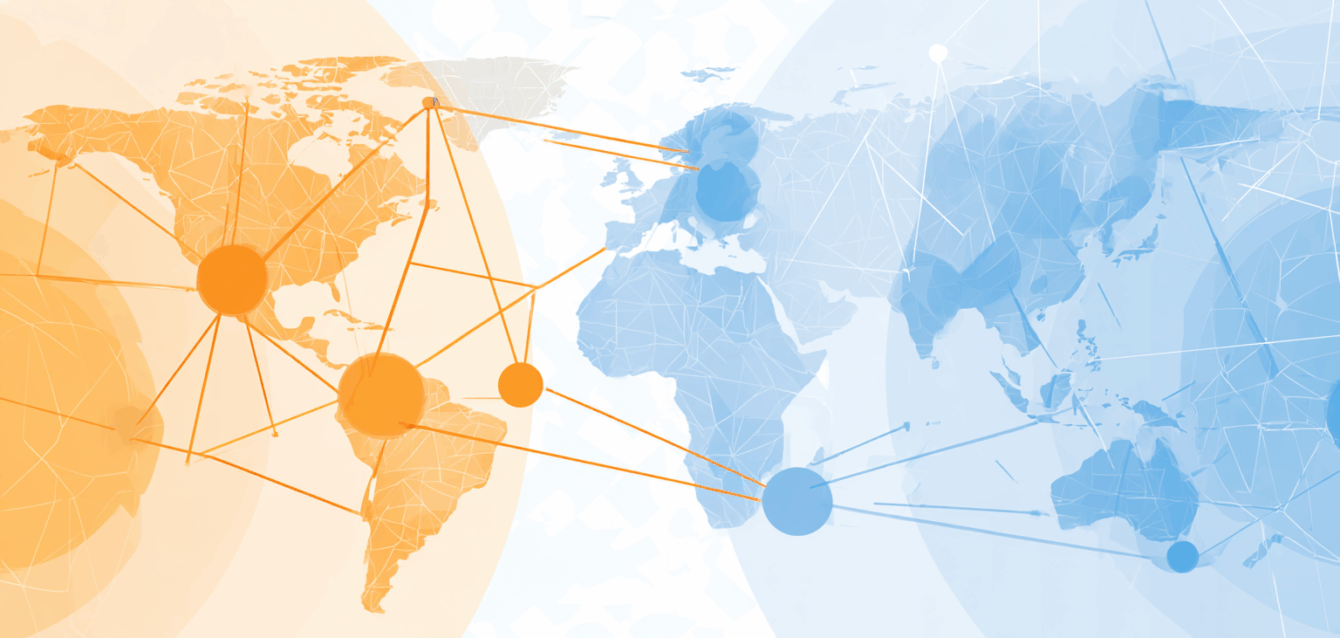A 2025 analysis by the Southeast Asia Business Council indicates that nearly 75% of high-growth firms cite talent scarcity as the primary obstacle to scaling operations. The specialized skills you need to compete may not reside in your immediate locale, forcing a critical decision: how do you build a dedicated, long-term team when your talent pool is now the entire globe?
The conversation has fundamentally shifted from outsourcing peripheral tasks to integrating core international talent directly into your organization. This move toward borderless hiring is no longer a niche strategy for massive corporations; it is a competitive necessity for businesses in demanding sectors like Technology, Healthcare, and BFSI. However, accessing this global talent requires a clear understanding of the operational models available, as the wrong choice can introduce significant compliance risks and operational drag.
Choosing Your Engagement Model: A Strategic Decision
Successfully building a team across borders hinges on selecting the right employment structure. The choice is not merely administrative; it defines the relationship with your talent, impacts your culture, and determines your long term agility. The three primary paths each serve a distinct strategic purpose.
- Independent Contractors: This model offers maximum flexibility for project specific work. It is ideal for engaging specialists with a defined scope and timeline, such as a software developer for a single product sprint or a marketing consultant for a campaign launch. However, the risk of worker misclassification is substantial and can lead to severe penalties, making this a poor fit for ongoing, integral roles.
- Employer of Record (EOR): An EOR partner allows you to hire employees in a new country quickly without establishing a local legal entity. The EOR handles payroll, benefits, and compliance, making it an excellent tool for testing a new market or securing a critical hire on a tight deadline. It serves as a powerful bridge, but for building a permanent, culturally aligned team, it positions your people as employees of a third party, which can create a disconnect.
- Direct Borderless Hire: In this model, you hire the individual as your own employee, either through your own foreign subsidiary or with the support of a strategic partner. This is the definitive solution for core, long term roles. When you need to build institutional knowledge, protect intellectual property, and deeply integrate a team member into your company culture, direct hiring is the only model that achieves true alignment. This approach is central to effective offshore staffing when permanence is the goal.
When to Commit: The Case for a Borderless Direct Hire
Opting for a direct international hire is a commitment. It is the most resource intensive path, but it also delivers the greatest strategic value for specific circumstances. You should strongly consider this model when your objectives include the following.
1. The Role is Core to Your Value Proposition.
If the position directly contributes to your intellectual property, customer relationships, or strategic direction, you need the loyalty and deep integration a direct hire provides. For a fintech company in Singapore, hiring a lead data scientist in the Philippines is not a temporary need; it is a core capacity. This individual must be woven into the fabric of your organization, not managed at arm’s length. The long term investment in their growth pays dividends in innovation and stability.
2. You Require Deep Cultural and Operational Integration.
Leaders, team managers, and key personnel responsible for driving company culture cannot be transient. A directly hired country manager for a retail expansion or a lead engineer for a manufacturing plant must live and breathe your company’s values and operating principles. This level of integration is nearly impossible to achieve through an EOR or contractor model, where the individual’s primary allegiance is functionally to another entity.
3. The Primary Obstacle is Compliance, Not Talent.
Often, the talent is readily available in markets like the Philippines or Vietnam, known for their robust workforces in technology and customer support. The real challenge is navigating the complex web of global employment laws. This is where a strategic partnership becomes invaluable. Instead of abandoning the ideal candidate due to regulatory hurdles, a solutions provider can manage the complexities of local payroll, mandatory benefits like 13th month pay, and tax withholding, allowing you to secure top talent directly. This transforms offshore staffing from a simple cost play into a strategic talent acquisition function.
A Framework for Your Borderless Hiring Strategy
Moving from local to borderless hiring requires a deliberate, strategic approach rather than a reactive one. The goal is to build a sustainable, compliant, and high performing global team.
- Define the Strategic Function of the Role. Before searching, classify the position. Is it a temporary project need, a market entry test, or a permanent addition to your core team? The answer dictates your hiring model.
- Select Markets Based on Talent Density, Not Just Cost. While cost efficiency is a benefit of offshore staffing, the primary driver should be access to skills. The Philippines offers a deep pool of finance, accounting, and healthcare administration professionals with high English proficiency. Vietnam is emerging as a powerhouse for software development. Match your operational need to the market’s strengths.
- Develop a Clear Compliance and Payroll Plan. This is the most critical step. Decide if you will build internal capacity to manage international compliance or leverage a partner. For most businesses, attempting to navigate unfamiliar global employment laws introduces unacceptable risk. A partner can provide the necessary infrastructure to ensure you remain compliant from day one.
- Design an Inclusive Onboarding and Management Process. A borderless employee is a full member of your team. Your onboarding, communication protocols, and performance management systems must be designed to include them seamlessly. This means scheduling meetings that respect time zones and providing the right technology to foster collaboration.
Building Your Global Team with Confidence
The shift to borderless hiring is a response to a simple reality: talent is universal, but opportunity has been localized. Closing that gap is now the primary work of modern workforce strategy. While contractors and EORs are valuable tools for flexibility and speed, they cannot replace the long term strategic value of a directly hired employee for core business functions.
Building a dedicated international team requires a sophisticated understanding of compliance, culture, and logistics. The right approach mitigates risk and unlocks access to a global talent pool, enabling you to build a more resilient and competitive organization.
Navigating these decisions requires clarity and expert guidance. If you are assessing how to best structure your global team for long term success, a focused conversation about your specific business goals can provide the necessary direction.
Connect with a Nezda Global strategist to explore a workforce solution that aligns with your vision for growth.



